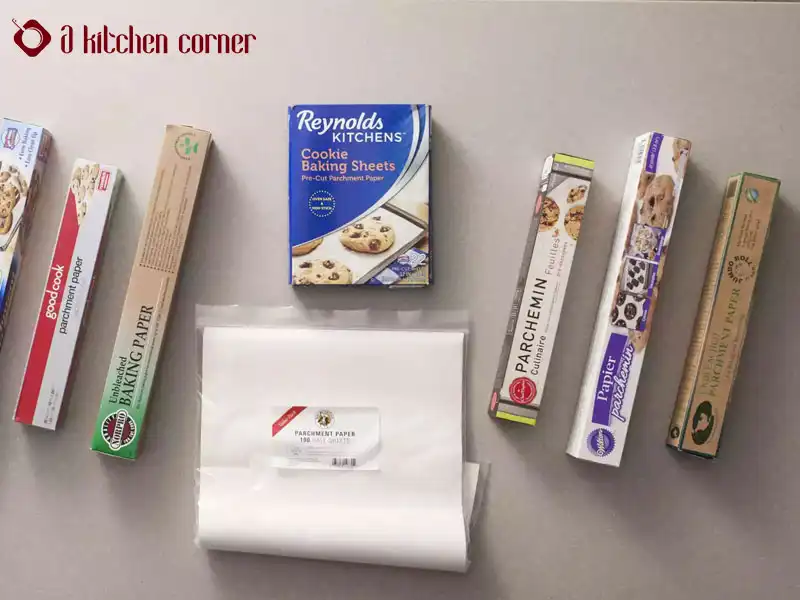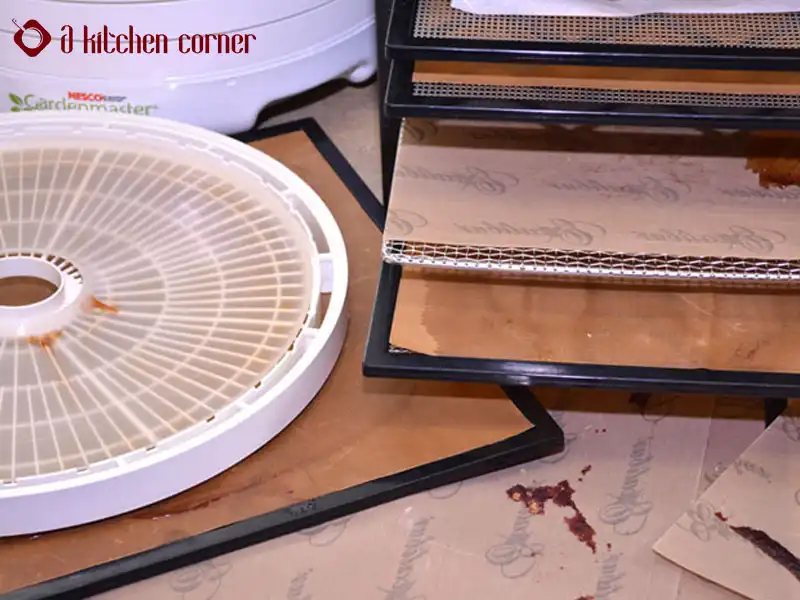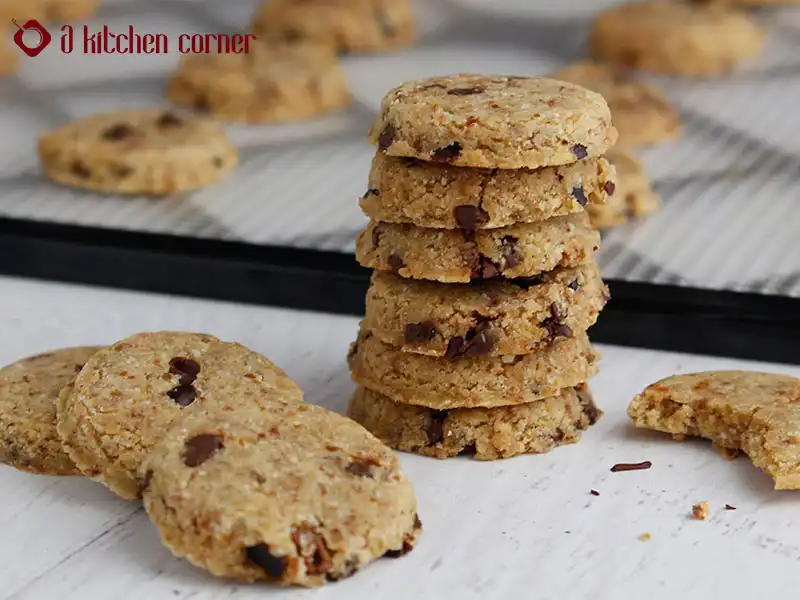Can You Use Parchment Paper In Dehydrators?

Parchment paper is a widely used tool in the world of cooking and baking, but have you ever considered using it in your dehydrator? The benefits of using parchment paper in this context are numerous, and can greatly enhance the quality of your dehydrated foods.
In this article, we will explore the advantages and disadvantages of using parchment paper in dehydrators, as well as some tips and tricks for getting the most out of this versatile tool.
So whether you’re a seasoned dehydrator pro or just starting out, read on to discover how parchment paper can take your dehydrating game to the next level.
Contents
- 1 Is it safe to use parchment paper in a dehydrator?
- 2 What Is Parchment Paper Used For?
- 3 Benefits and Drawbacks of Using Parchment Paper in a Dehydrator
- 4 How Do I Use Parchment Paper In Dehydrators?
- 5 Pro tips for using parchment paper in dehydrators
- 6 Top 3 Brand of Parchment Paper I Would Recommend?
- 7 FAQs
- 8 Final thoughts
Is it safe to use parchment paper in a dehydrator?
Yes, it’s perfectly safe to use parchment paper in a dehydrator. It’s a type of paper treated with silicone to make it non-stick and heat-resistant. This makes it ideal for dehydrating food and baking, as it prevents food from sticking to the pan and makes cleanup a breeze.
To be more specific, let me explain why you can confidently use parchment paper in your dehydrator.
- Parchment paper is heat resistant: Parchment paper is heat resistant due to its silicone coating, which has a high melting point. Dehydrators operate at low temperatures that are nowhere near hot enough to cause parchment paper to melt or catch fire.
- No chemicals: Using parchment paper provides peace of mind that you’re not exposing your food to harmful chemicals. Parchment paper is made with minimal chemicals and none of them are harmful. For even fewer chemicals, you can opt for unbleached (brown) parchment paper.
- It can be shaped: You’ll need to adjust your parchment paper liner to fit the size and shape of your dehydrator trays. Fortunately, parchment paper is easy to cut and shape to fit your trays. Cut the paper to fit the trays evenly, as this will minimize excess paper flapping around.
- It can be reused: It’s safe to reuse parchment paper a few times (3-4 times, or until it becomes brittle). You can also use both sides of the paper since there’s no difference between the two sides. This is not only great for you, but also for the environment!

It’s perfectly safe to use parchment paper in a dehydrator
What Is Parchment Paper Used For?
Parchment paper has become increasingly popular as a versatile kitchen tool. Its heat resistance, and greaseproof properties make it ideal for lining oven pans and trays when cooking a variety of foods such as meatloaf, fish, vegetables, and fruits.
- Using parchment paper helps to make cleaning up your dehydrator easier, eliminates the need for scrubbing out crusted remains, and prevents food from sticking to the tray.
- Additionally, parchment paper can be used when dehydrating food in a food drier or dehydrator, particularly when making items like crackers or no-bake dried cookies.
- The paper can be cut to fit your tray and then disposed of or reused a few times to reduce environmental impact.

Parchment paper can be used in a food dehydrator, particularly when making items like crackers or no-bake dried cookies
Benefits and Drawbacks of Using Parchment Paper in a Dehydrator
Benefits of using parchment for drying food
As mentioned earlier, parchment paper has numerous benefits when used with dehydrators. Below are some of its advantages:
Save time cleaning up the trays after using
Using parchment paper when baking food on a baking tray will help you save time and energy. Without parchment paper, the food may stick to the tray, making it difficult to clean. This requires you to scrape off the stuck food and then wash the tray. Using parchment paper will save you the hassle of cleaning the tray.
Prolong the lifespan of your strays
Using parchment paper can help make your baking trays more durable and maintain their good condition. You won’t have to constantly scrape off food that sticks to your trays, which means less time and effort spent scrubbing and washing them with soapy water.
Your trays will last longer and maintain their good condition as a result. Additionally, you won’t have to worry about excess oil or dried sugars shortening the lifespan of your trays.
Your food won’t fall through the holes
Dehydrator trays come with holes to allow heat to circulate easily through the appliance. When placing fresh fruit on the tray, you will most likely have no problems. However, when the fruit loses moisture and shrinks, it can end up falling through the holes.
Using a thin layer of parchment paper placed on the tray will act as a safety net and prevent this from happening.
Parchment paper allows for ventilation
Compared to other alternatives such as wax paper and aluminum foil, parchment paper allows your food to breathe. The other options tend to seal out air, which is necessary for dehydrating your food and reducing drying time. With parchment paper, air can pass through freely, making it the ideal choice for dehydrating food.
It’s versatile
Parchment paper is a versatile option for dehydrating food. It works well with all types of fruit, whether you’re making fruit leather or fruit roll-ups. Additionally, you can use parchment paper to dry jerky, herbs, and many other kinds of food. Simply line the tray with parchment paper and begin the drying process.

Parchment paper has numerous benefits when used with dehydrators
Drawbacks of using parchment paper in dehydrating food
Here are the limitations of using parchment paper in dehydrators:
It slows down the drying process
While there are many benefits of using parchment paper in dehydrators, there are also some limitations. One of the biggest limitations is that it can slow down the drying process. Parchment paper is not as porous as the mesh screens that come with dehydrators, which can reduce the airflow and slow down the drying process.
Not suitable for all foods
Another drawback of using parchment paper in dehydrators is that not all foods can be dried using it. Foods that are particularly moist or have a high water content shouldn’t be dried on parchment paper since the paper can become saturated and hinder the item from drying properly.
Additionally, very thin or small foods may fall through the gaps in the parchment paper and land on the dehydrator’s bottom if you are dehydrating them.
Can create more waste
Even though parchment paper is compostable and biodegradable, it still generates additional waste that needs to be properly disposed of. Additionally, using multiple sheets of parchment paper if you are dehydrating a lot of food may be necessary, which can result in even more waste.
How Do I Use Parchment Paper In Dehydrators?
Dehydrating with parchment paper is an easy process. Here are the steps:
- Measure the parchment paper to fit your dehydrator’s trays.
- Cut the parchment paper accordingly.
- Place the parchment paper on the trays and add the food you want to dehydrate on top of it.
- Put the trays in the dehydrator and start the process.
- When finished, remove the trays from the dehydrator and lift the parchment paper from them.
- Take out the dried food from the parchment paper.
- Depending on its condition, either throw away or store the parchment paper for future use.

Dehydrating with parchment paper is an easy process
Pro tips for using parchment paper in dehydrators
If you decide to use parchment paper for drying food, here are some protips for you:
The parchment paper should be sized
Make sure the parchment paper is cut to fit the dehydrator tray’s dimensions. The dehydrator may be harmed if the paper is too big and gets trapped in the fan. The food may stick or fall through the spaces on the tray if the paper is too narrow.
Use it with certain foods
For dehydrating items that are not very moist or have a high water content, parchment paper works best. It can also be used to dehydrate sticky things like fruit leather or sticky meals like nuts.
However, it might be preferable to use the dehydrator’s mesh screens for foods like jerky or vegetables.
Regularly check on the food
It’s crucial to periodically check on the food when putting parchment paper in a dehydrator to make sure it is drying properly. You might need to change the temperature or the placement of the trays if the food is not drying evenly.
Put the paper in an appropriate trashcan
Make sure to properly dispose of the parchment paper after you have finished using it. You can compost it if it isn’t too filthy. You might need to dispose of it in the garbage if it still has food residue on it.
Top 3 Brand of Parchment Paper I Would Recommend?
Worthy Liners Parchment Paper
This is an excellent solution for people who wish to guarantee that their food is cooked properly. It is also a wise decision for people who want to steer clear of sticking and burning. The Worthy Liners Parchment Paper is a smart kitchen purchase.
Pros
- Made in the US
- capable of cooking at temperatures of about 400 °F
- 100 pre-cut sheets that are 14″ by 16″
- This item is resistant to moisture and is non-sticky
Cons
- Expensive
Rounds of Katbite Parchment Paper
Katbite’s 12-inch circles are a terrific choice if you’re looking for the best parchment paper to use in your food dehydrator. They are strong and fit most common round dehydrators and they are made entirely from natural wood pulp.
Pros
- 200 pieces
- There is no need for cutting or measuring.
- Katbite parchment paper is manufactured entirely of natural resources, making it healthy and non-toxic.
- Katbite Parchment Paper Rounds can withstand heat up to 450F without breaking.
- Reasonably priced
- Non-stick
- It is available in several sizes.
Cons
- It can only be used in a round dehydrator
,
Kana Parchment Paper
Kana parchment paper is an ideal solution for dehydrators as it is both compostable and biodegradable, rendering it a top choice for eco-friendly individuals.
It is certified for food contact and PEFC, and it is non-stick and oven-safe. With 140 sheets, there is ample supply for all baking endeavors.
Pros
- A large quantity is available,
- Non-stick, and being
- Safe to use in the oven. Additionally, the sheets are
- Environmentally friendly (compostable and biodegradable)
Cons
- These sized sheets are available only in the UK; the ones in the US are round sheets.

 FAQs
FAQs
Wax paper can be used in the dehydrator as an alternative to parchment paper, but there are some things to keep in mind.
Wax paper is more prone to scorching or melting in hot temperatures because it is less heat-resistant than parchment paper.
Your food could stick to wax paper since it is less non-stick than parchment paper.
Wax paper, however, is typically less expensive than parchment paper, so it can be preferable if you’re on a tight budget.
In the end, experimenting and seeing what works best for you is the best approach to choosing the sort of paper to use.
Dehydrator sheets are a great substitute for parchment paper, specifically created for dehydrating food. These sheets are made from non-stick material and can withstand high temperatures, just like parchment paper.
Plus, they can be reused multiple times, making them a more cost-effective option.
Parchment paper can be used when dehydrating jerky in the oven. Jerky is a tasty and convenient snack that can be made at home with just a few simple ingredients.
To create great jerky, it’s important to select the right cut of meat and find the perfect seasoning balance. Once you have those two things sorted, the process is quite simple.
To dry your jerky in the oven, you can line the baking sheet with parchment paper.
For parchment paper jerky, all you need to do is place the parchment paper on a baking sheet and arrange your meat or vegetable strips on top.
Next, bake the jerky according to your recipe. The parchment paper will prevent sticking and burning, and it will also make cleanup a breeze.
So if you’re looking for an easy way to make jerky in the oven, parchment paper is definitely worth considering.
Final thoughts
If you have a roll of parchment paper at home and are unsure of its uses beyond food wrapping, baking, and roasting, you can now use it for dehydrating.
The ideal material to put in your dehydrator is parchment paper because it is non-stick and heat-resistant. There is no need to be concerned about your food burning or sticking to the pan.
The paper ensures proper dehydration by distributing heat throughout your dehydrator. Additionally, since there won’t be any food residue left on your pans, the cleanup process will be a breeze.
We’ve discussed the safety concerns and benefits of using parchment paper in dehydrators. We hope this information has been helpful in answering the question of whether it’s safe to use parchment paper in your dehydrator.
We also want to hear from you! Do you have any tips or experiences to share about using parchment paper in dehydrators? Let us know in the comments below. Your insights and feedback can help other readers make informed decisions about using parchment paper in their own dehydrators.
You might be interested:










